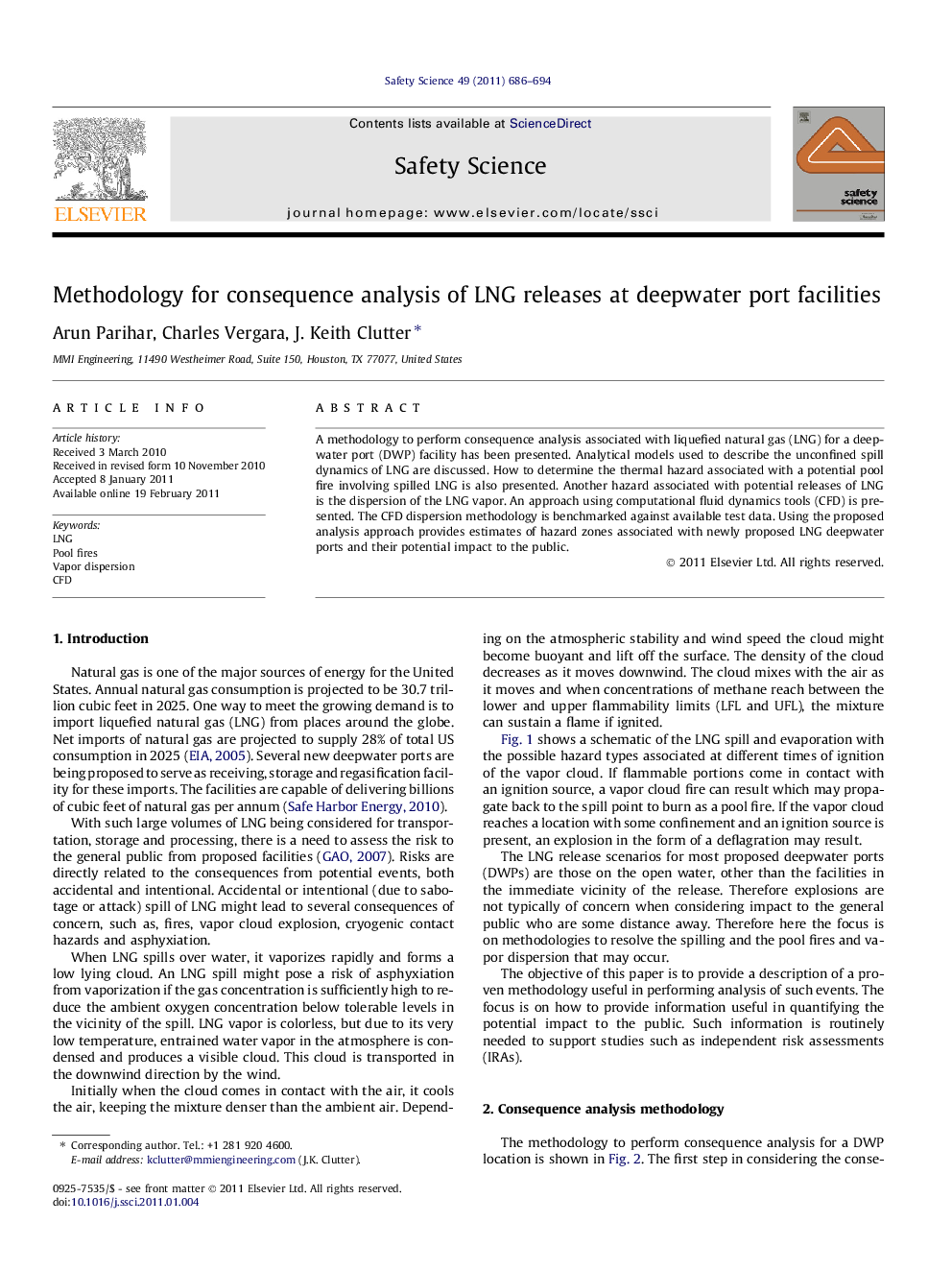| Article ID | Journal | Published Year | Pages | File Type |
|---|---|---|---|---|
| 589969 | Safety Science | 2011 | 9 Pages |
A methodology to perform consequence analysis associated with liquefied natural gas (LNG) for a deepwater port (DWP) facility has been presented. Analytical models used to describe the unconfined spill dynamics of LNG are discussed. How to determine the thermal hazard associated with a potential pool fire involving spilled LNG is also presented. Another hazard associated with potential releases of LNG is the dispersion of the LNG vapor. An approach using computational fluid dynamics tools (CFD) is presented. The CFD dispersion methodology is benchmarked against available test data. Using the proposed analysis approach provides estimates of hazard zones associated with newly proposed LNG deepwater ports and their potential impact to the public.
Research highlights► An appropriate analytical method for predicting the spread of LNG on water is preseuted. ► A Semi-empirical method useful in analyzing pool fires is presented. ► A computational fluid dynamics model useful in calculating LNG vapor dispersion is validated against test data.
